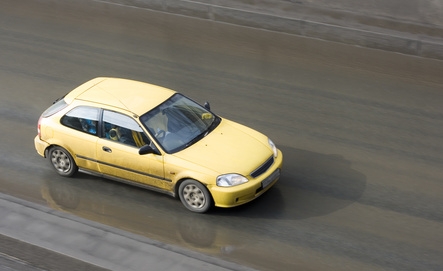
From the speedometer to the cruise control to the transmission, the data collected by speed sensors affects the operation of multiple systems functioning within your car. In fact, many systems rely on these sensors' input to operate. Speed sensors measure the speed of the transmission/transaxle output of the wheel, then send a signal carrying this data to your car's operating systems.
The variable-assisted power steering (VAPS) system in your vehicle utilizes speed sensors so you can navigate parking lots, school zones and other low-speed areas with ease. The VAPS system controls and adjusts the car's power steering pressures. The speed sensors send data on speeds to the VAPS that allows the system to control and adjust power steering pressures. This regulation of power steering pressures allows the system to help you decelerate easier, which in turns helps you drive in low-speed areas.
The speed sensors used by the anti-lock brake system (ABS) of your vehicle let the ABS know when a wheel locks up and when to discharge pressure from that wheel so you can continue to steer the car. Depending on the brand of vehicle you own, the ABS may utilize sensor from transmission/transaxle, wheel, or a combination of both sensors.
Unsurprisingly, speed sensors also help your car's speedometer operate. The instrument cluster (IC) and hybrid electric cluster (HEC) modules translate the data from the speed sensor into a reading on your speedometer.
If your vehicle employs an advanced air suspension system, the speed sensors may also help determine how high your car rides. The height of your car affects how your car handles at high speeds. The lower your car sits, the better it will handle when you're driving fast.
Speed sensor input data to your transmission as well. The information they gather tells the transmission how to shift as you change speeds.
The information from the speed sensors allows the cruise control system of your car to maintain a steady speed, accelerate and decelerate without you having to touch the gas pedal or brake pedal.
The electronic engine control (EEC) system uses the signals from speed sensors to adjust engine functions due to fluctuations in speed. It also uses input from the sensors to begin diagnostic procedures.